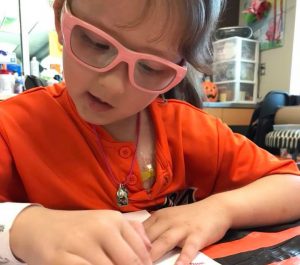Grading helps us understand how aggressive a tumor is and if the tumor has spread, and if so, how far. There are four grades of brain tumors, and the higher the grade the more malignant the tumor. Generally speaking, the lower the tumor grade, the better the chance of recovery. Tumor grading helps the doctor, patient, and caregivers/family members to better understand the patient’s condition. It also helps the doctor plan treatment and predict outcome.
Below are description of the various tumor grades, based on the World Health Organization (WHO) grading system:
- Grade I: These are the least malignant tumors and are usually associated with long-term survival. They grow slowly and have an almost normal appearance when viewed through a microscope. Surgery alone may be an effective treatment for this grade tumor.
- Grade II: These tumors are slow-growing and look slightly abnormal under a microscope. Some can spread into nearby normal tissue and recur, sometimes as a higher grade tumor.
- Grade III: These tumors are, by definition, malignant although there is not always a big difference between grade II and grade III tumors. The cells of a grade III tumor are actively reproducing abnormal cells, which grow into nearby normal brain tissue. These tumors tend to recur, often as a grade IV.
- Grade IV: These are the most malignant tumors. They reproduce rapidly, can have a bizarre appearance when viewed under the microscope, and easily grow into nearby normal brain tissue. These tumors form new blood vessels so they can maintain their rapid growth. They also have areas of dead cells in their centers. The glioblastoma multiforme is the most common example of a grade IV tumor.
Ok, I’m just going to say it: The WHO’s description is misleading and has created a ho-hum attitude about Grade I brain tumors that is frustrating and offensive. Kiara’s tumor is a Grade I pilocytic astrocytoma and it is not a friendly little tumor that you scoop out and it goes away. It has wreaked havoc on her body — permanently compromised her balance and taken her vision. Plus, it is against (grabbing into) her brain stem, so this is inoperable and life-threatening. She has endured 68 weeks of chemotherapy treatments and will have to face the consequences of what that may have done to her body. The paradigm about Grade I battles needs to be changed.

